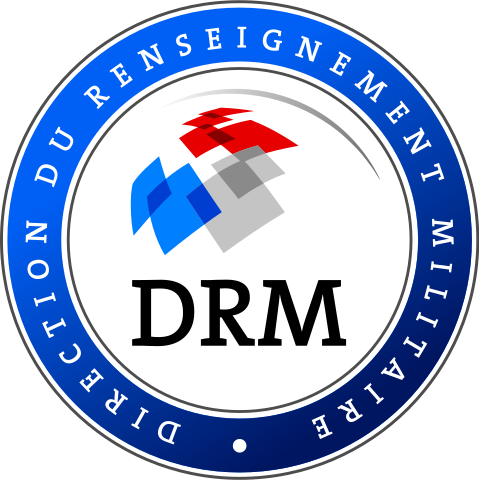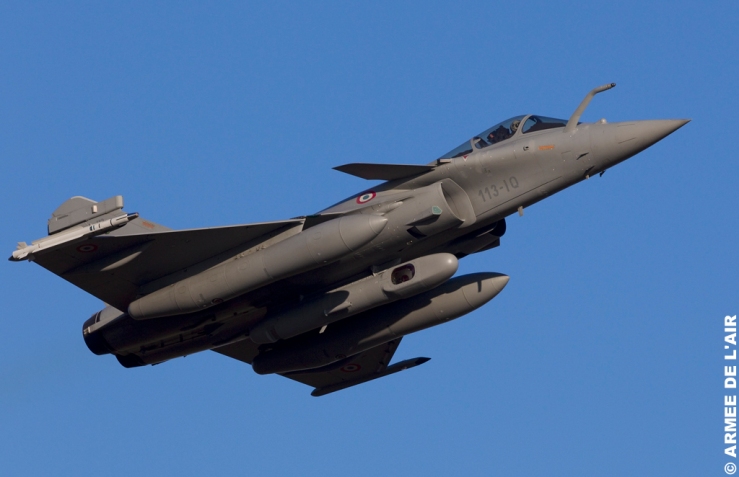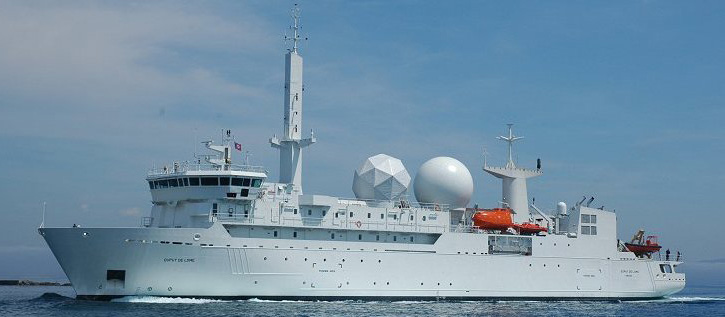The center for artificial intelligence at the Paris Sorbonne university is organizing a weekly seminar on the state of GEOINT in France, with a lot of distinguished speakers from the French ministry of the armed forces and from the industry. To open the series, they had none other than general (Air) Jean-François Ferlet, the head of the military intelligence agency DRM (Direction du Renseignement Militaire). He has been commanding the DRM since 2017, and before that was head of the center for planning and execution of operations (CPCO, Centre de Planification et de Conduite des Opérations) of the general staff. Here is a transcript of his intervention:
“I will start by presenting quickly the DRM, then present examples of how we use GEOINT, our futures challenges and then answer questions from the audience.

The DRM
DRM is an agency which reports directly to the Chief of Staff, the Minister for the Armed Forces and the President of the Republic, and has three missions:
- Supporting operations, a task for which we operate in a rapid response loop, with cross-functional desks
- Anticipating crisis, ideally 6 months to one year in advance, so that we are not caught by surprise
- Permanent strategic watch, to assess the balance of forces between world powers on a longer timescale
We have 2000 personnel in the agency directly and a further 8000 support our mission within the armed forces, mostly by doing collection.
Internally, we are organized this way:
- We man a J2 intelligence function at CPCO
- We have a sub-directorate for collection, with separate expertise centers for image, electromagnetic, human and cyber intelligence
- We have a sub-directorate for exploitation, which is were the analysts are. Inside, there are geographic desks as well as thematic desks for counter-proliferation for instance. The main component is the center for geospatial intelligence, where we fuse the intelligence from the various sensors
- Finally we have a support sub-directorate, with human resources, infrastructure, finance and preparation of future sensors
Regarding our capabilities, we have sensors over the full spectrum, which gives us an autonomous assessment of the situation. This is regarded as critical for our national security, so the military planning laws over the years have kept intelligence as one of the top priorities. Thanks to that, we enjoy a very good technical level in imagery (with a very high resolution), electromagnetic and cyber, with a strong industrial base [For more on French capabilities you can read History of the French reconnaissance system]. While we do not have the volume of assets of the USA for instance, we nevertheless are among the handful of countries with independent, full-spectrum capabilities.
GEOINT at the DRM
Regarding GEOINT, we realized some time ago that all the data we collected was geo-referenced, so we could lay them on a map and it helped us analyze the situation and orient the collection. We were not the first to do that, GEOINT was introduced in the USA by the NGA, the National Geospatial Agency. They handle imagery within the US intelligence community, are a much bigger organization than us: they have 17 000 personnel whereas my imagery center only has 250. In the US, military intelligence is split between the NGA for imagery, the NSA for electromagnetic, and the DIA for analysis, with a deputy under secretary of defense for intelligence coordinating them. So we cannot compare in size, but on the other hand our smaller organization with everything inside has benefits too. It allows us a lot of flexibility and responsiveness: for instance, for the current Armenia/Azerbaijan conflict, I was able to reorient sensors and analysts to work on it in 24h over a weekend.
Note that we also use open sources to fuse into our GEOINT, including sociological data.
I will now present two use cases of GEOINT where we used it to support operations.

Use case 1: Reconquering Raqqa
A part of the offensive against Daech, we had to reconquer their stronghold and capital city of Raqqa. We started by mapping communication axes and features that restrained mobility, such as the river but also the areas that Daech had deliberately flooded to slow down movement. This is nothing new, it has been done since the map was invented and Napoleon did the same thing, except without satellite imagery.
Then we added information about enemy defensive efforts, such as checkpoint, defensive emplacements and obstacles.
We laying them on a map, it gave us an idea of Daech defensive maneuvers, which used two lines of defense. We were also able to see how it evolved over time. That helped us define the strategy to retake the city.
Use case 2: Finding the Mossoul command post
During our campaign with Daech, we also wanted to find their command post in Mossoul to be able to strike it. We started the same way by mapping out the axis of communication, as a command post needs to be close to them to distribute orders. We overlaid that with the population density, as Daech has understood we do not strike when civilians are nearby and consequently like to nest itself within the population. We also mapped the administrative buildings, because they like to present themselves as the legitimate and official power, and thus prefer official-looking buildings. Finally, we used information about the different neighbourhoods to restrict the search to the ones with a majority of Sunni population, as Deach is Sunni and would not hide among Kurds for instance.
That gave us 8 500mx500m squares to search, which we then watched over for several days. Narrowing down the possibilities to orient the collection is extremely important because if we had not, we would still be scanning Raqqa for this command post.
We ruled out the zones without any activity over several days, and added electromagnetic, human and open source intelligence to further narrow the search down to one square. We put a permanent drone orbit over this one, and we were able to find the building with the enemy HQ. We then struck it with a precision munition at the most appropriate time indicated by our pattern of life analysis, to minimize risks to the population.
As part of our support to operations, we also provide maps to troops in the field to help them analyze the situation. So overall, GEOINT helps us take decisions, orient the collection and support the operations.
Future challenges
However, there is still progress to be made. We are doing all right on the collection side, but we have challenges on exploitation. We need to analyze vast quantities of data, with an amount that is actually growing exponentially, and we need to do it in the right timeframe. It is always easy to retrospectively look back at the data and say that we should have detected something because it was in our database, but that is easy when you know what you are looking for. Something being in our database does not mean we know the information: we only exploit a fraction of our database and write notes on a fraction of what we exploit.
We also need to make our databases more interoperable. In the past there were separate databases for each sensor, and today we still have classification problems. Making highly classified electromagnetic intelligence coexist with open sources is not easy. You could put everything at the maximum level of classification but we are not going to download and classify all of the internet. We also need to be more interoperable outside of DRM and improve our distribution of GEOINT to the tactical level.
We have human resources challenges too: we need data scientists and engineers, and there is a lot of competition with the private sector to get them. The fact that 50% of those we train in France are poached by US firms does not help, as well as the fact not enough French students choose curriculums that have useful applications such as data scientist.
Currently, we spend 95% of or equipment purchases on collection and 5% on exploitation. I am not saying we need to reverse this proportion but there is a balance to be made. Finally, we need to improve on how we orient the collection, and on our predictive analysis capability: knowing something happened yesterday is going but not that useful, knowing what will happen tomorrow is better.
Q & A
Q: What is the role of the intelligence campus?
A: The intelligence campus has two roles: the first is to look at off-the-shelf capabilities that the industry has. Sometimes they are not aware of what we need so they do not propose it to us, so we strive to put in touch the users and the startups, in the field of artificial intelligence for instance. It’s a parallel effort to more structured, long-term military procurement programs like ARTEMIS for instance.
We also use it to collect existing knowledge. For instance, we need experts on other cultures and societies to ensure our interpretations are not French-centric and take into account cultural differences. We need psychologists, geographers, and so forth and as part of that effort we sponsor PhDs. This is appreciated as it gives their work a real impact that sometimes academic research does not have.
Q: On the computing power side, how do you plan to cope with future demands?
A: We already have a sizeable compute capability. It is not only about raw compute power, we can also be smart and run our algorithms on only the right data were we know we will find useful information instead of our full datasets.
We are concerned about advances in quantum computing, especially on the ability to break classical encryption schemes. Given the relative amount of investment in that field between France and the USA or China, we do not expect to be the first to have a quantum computer operational. Since breaking encryption schemes is a capability that will be used by others to gain an advantage, and I do not want others to browse my data, we are looking into quantum-resistant encryption schemes. The good news is that you don’t need a quantum computer to protect yourself with quantum-resistant algorithms.







[…] much for human analysis. Even with the current imagery, DRM, the military intelligence agency is overwhelmed by data and can only look at a fraction of what is collected, and the constellation would bring one or two […]
LikeLike
Reblogged this on The restless technophile.
LikeLike
[…] threats are inserted. A mission net connecting all the tools and actors, including Cyber Command, Military Intelligence (DRM, which tasks the observation satellites), the military communications directorate (DIRISI, […]
LikeLike